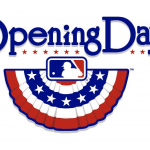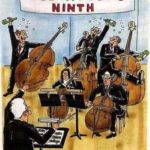Baseball History 101: Henry Chadwick, Laws of Cricket and Standardized Rules
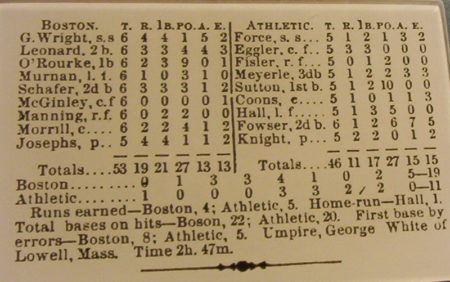 Baseball, 150 years later, still exudes an English flavor of cricket. What does this mean?
Baseball, 150 years later, still exudes an English flavor of cricket. What does this mean?
That as the game changed from its open, leisurely and civilized pace to a fiercely contested battle in closed, grungy and dilapidated wooden ballparks that charged admission, fans expected more. Consistency of play. And the next day, fans wanted to know who won or lost and why.
Much of the credit for baseball’s success during its infancy was due to the ingenious inventions of Henry Chadwick, an Englishman who came to America as a 12-year-old (in 1836) and played cricket before becoming enamored with baseball. He became the preeminent baseball writer of his generation, bringing yesterday’s games alive on the crumpled pages of newspapers the next day.
And as professional baseball grew, Henry Chadwick developed a scoring system that was a relatively simple numerical representation of the game that was perfect for newspapers—and was used for more than 100 years, until the internet and video recaps of games became the norm—the “baseball box score.”
Henry Chadwick Sets the Standards
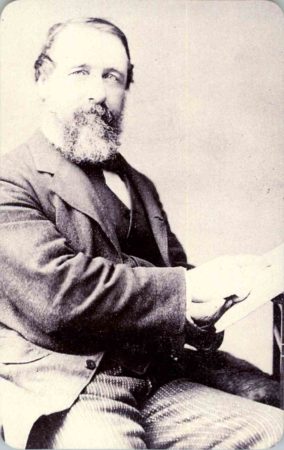
Henry Chadwick’s propensity for consistency, his insistence the game be played the same in Chicago as in Boston, led him to be selected as the Chairman of the National Association of Base Ball Players’ Committee on Rules. He oversaw the first rulebook created for professional baseball, and by so implementing this system of consistent play, Chadwick paved the way for the success of the professional game. Every game in the National Association of Base Ball Players (NABBP) was played by the same rules. The product was the same in every stadium despite the different personalities on the field.
So, as the NABBP began play in the 1871 season, there were rules how to play, and games were reported to fans based on recordable achievements. Hits. Errors. Home runs. At-bats. And so forth. Fans could purchase a morning newspaper and relive yesterday’s game. Who starred. Which player contributed to a win. Or a loss. No wonder many called Henry Chadwick the “Father of Baseball,” and he was enshrined posthumously in the Baseball Hall of Fame in 1938.
And while we do not think of this as an English flavor, it is. Chadwick changed the face of professional baseball with his insights, probably drawn from the codified Laws of Cricket which specified how the game should be played, whether in England or Australia. Such Laws date back to the middle of eighteenth century England. So anyone growing up playing cricket understood it was governed by laws that dictated play. That’s not to say baseball is based on the Laws of Cricket, but it is to say Chadwick and other Englishmen understood there had to be accepted rules in baseball, too, if the game was to thrive.
Harry and George Wright Impact the Game
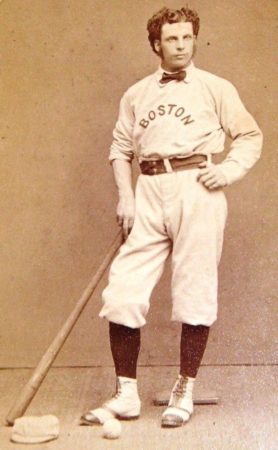

Chadwick also chronicled the first great professional baseballer: Harry Wright. An Englishman. Son of a professional cricket player. He immigrated to America, became a professional cricket player in New York and then moved to Cincinnati, but soon after signed a humongous $1,200 annual contract to play center field for the Cincinnati Red Stockings. (His salary was mammoth in comparison to the 50 cents a day most immigrants lucky enough to secure work were paid.) And as Wright and the Red Stockings prospered, Wright brought in his talented younger brother, George Wright, who played shortstop, and was so good the Stockings paid him $200 more a season than Harry.
Soon enough, Harry Wright was both manager and center fielder. As manager, Wright played to win, and he took advantage of opportunities created when he made strategic choices how to play the game. Pinch-hitting. Bunting. Defensive replacements. He even pitched (apparently he bowled like cricketeers) in relief of his best pitcher, Asa Brainard (the pitcher whose name was shortened to mean “Ace,” which became the way future greats were referred to: aces), unheard of at that time. And, of course, teamwork. He insisted his players play as a team, not individuals. None of these maneuvers had been part of the game before Harry Wright. And it’s one of the reasons why Wright was enshrined in the Baseball Hall of Fame in 1953. His brother George was enshrined in 1937.
Cincinnati’s Perfect Season: 57-0
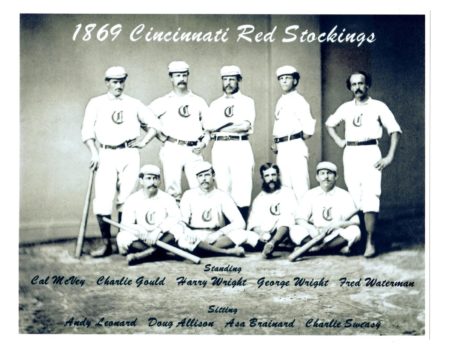 Wright was also the reason Cincinnati was a fantastic professional success. Over several years, they won 84 consecutive games, including a perfect 1869 season, 57-0. But there’s a saying, you can’t win ‘em all. And in Brooklyn on June 14, 1870, time caught up with Cincinnati.
Wright was also the reason Cincinnati was a fantastic professional success. Over several years, they won 84 consecutive games, including a perfect 1869 season, 57-0. But there’s a saying, you can’t win ‘em all. And in Brooklyn on June 14, 1870, time caught up with Cincinnati.
They faced the tough Brooklyn Atlantics. Twenty-thousand Brooklynites (some say the most ever to see a baseball game at that time) paid admission to cram into the Capitoline Grounds to see the game. And it didn’t disappoint. It was a hotly contested 11-inning game that turned on an improbable hit by the Brooklyn pitcher that secured the 8-7 victory, ending Cincinnati’s perfect winning culture. They were 84-1. Not bad.
But when the news reached Cincinnati, the public was outraged, and the financial backers of the Red Stockings were so disillusioned by the loss that they disbanded the team and released all their players from their contractual obligations.
The best of those Red Stockings, Harry and George Wright, joined the Boston Red Stockings for the inaugural season of the National Association of Base Ball Players (NABBP) in 1871 (a league organized by its players around its players). Joining them was perhaps the greatest pitcher in America at that time: Albert Spalding, who, along with Harry Wright as the Boston player/manager, led Boston to its first NABBP championship in 1871, and subsequent others before baseball reorganized again.
Birth of the National League
That reorganization occurred in 1876 and was based on the principle that teams should control their players. As such, The National League of Professional Baseball Clubs, an eight-team league, was founded. It’s the same National League of Baseball Clubs that exists today, 142 years and seven more teams later.
So, even if most fans are not aware, American baseball owes a debt of gratitude to the English and cricket. It was Englishmen familiar with the institutional ways of cricket who introduced those ideas into American baseball and changed the way players thought about the game. By standardizing rules, the professional leagues received the financing necessary to become a business, and not only pay players, but create ancillary economic opportunities for those ready to supply fans with everything from cold drinks and prepared foods, to memorabilia. Many people became wealthy as a result of Chadwick’s and Wright’s ingenuity.
Further, The New York Mercury (quoted in Wikipedia) showed an acute understanding of baseball’s role in the Reconstruction of America, writing in a November 24, 1877 column, “The baseball mania is getting so bad that every city will soon have a mammoth structure like the Roman Coliseum to play in. This will be illuminated by electric lights so that games can be played nights‚ thus overcoming a serious objection at present existing.”
It took a while, but the New York Mercury was right. May 24, 1935. Fifty-eight years later. At Crosley Field in Cincinnati. The Cincinnati Reds beat the Philadelphia Phillies 2-1 under the lights. And baseball was never the same again.
